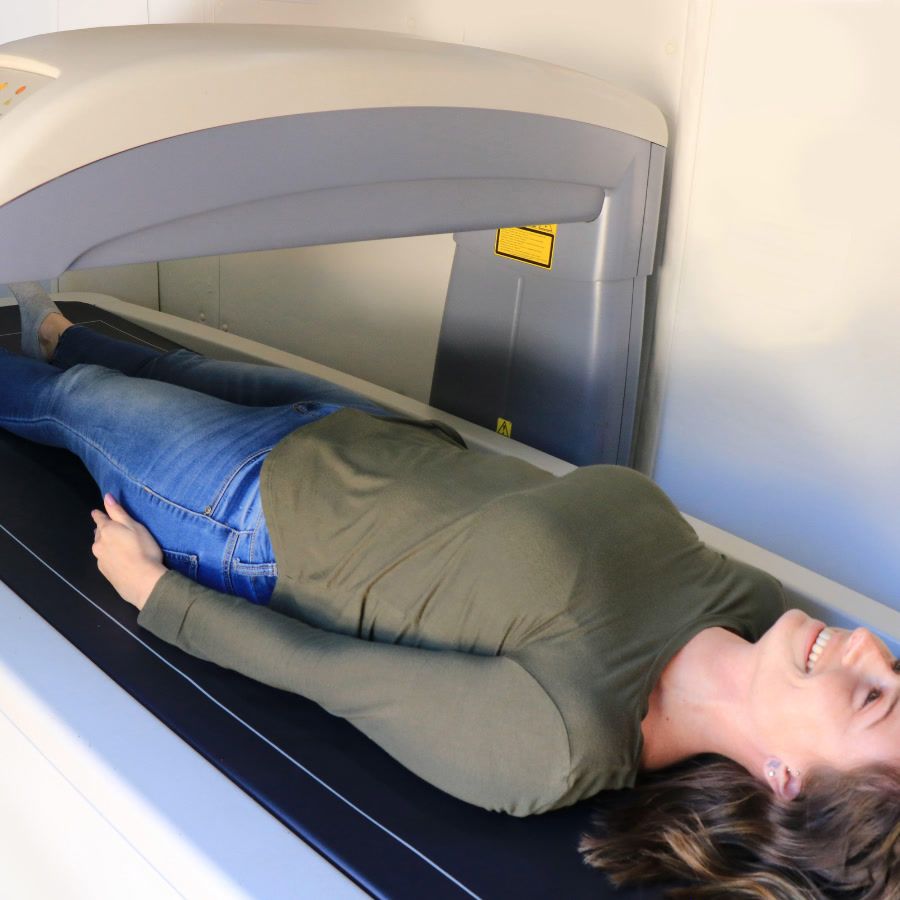What Is Healthspan?

What Is Healthspan? A Straight-Talk Guide to Living Better, Not Just Longer
Primary keyword: what is healthspan
Quick take: Healthspan is the length of time you live in good health—free from chronic disease and disability—not just the total number of years you’re alive. Think of it as the healthy slice of your lifespan pie.
Table of Contents
- Healthspan vs. Lifespan: The 30-Second Definition
- Why Healthspan Matters (More Than Ever)
- Can You Measure Healthspan? Key Metrics & Biomarkers
- 5 Evidence-Based Ways to Extend Your Healthspan
- Early Action vs. Late Action: A Case Study
- How BodySpec Scans Fit Into the Picture
- 7-Day Healthspan Jump-Start Checklist
- Bottom Line
Healthspan vs. Lifespan: The 30-Second Definition
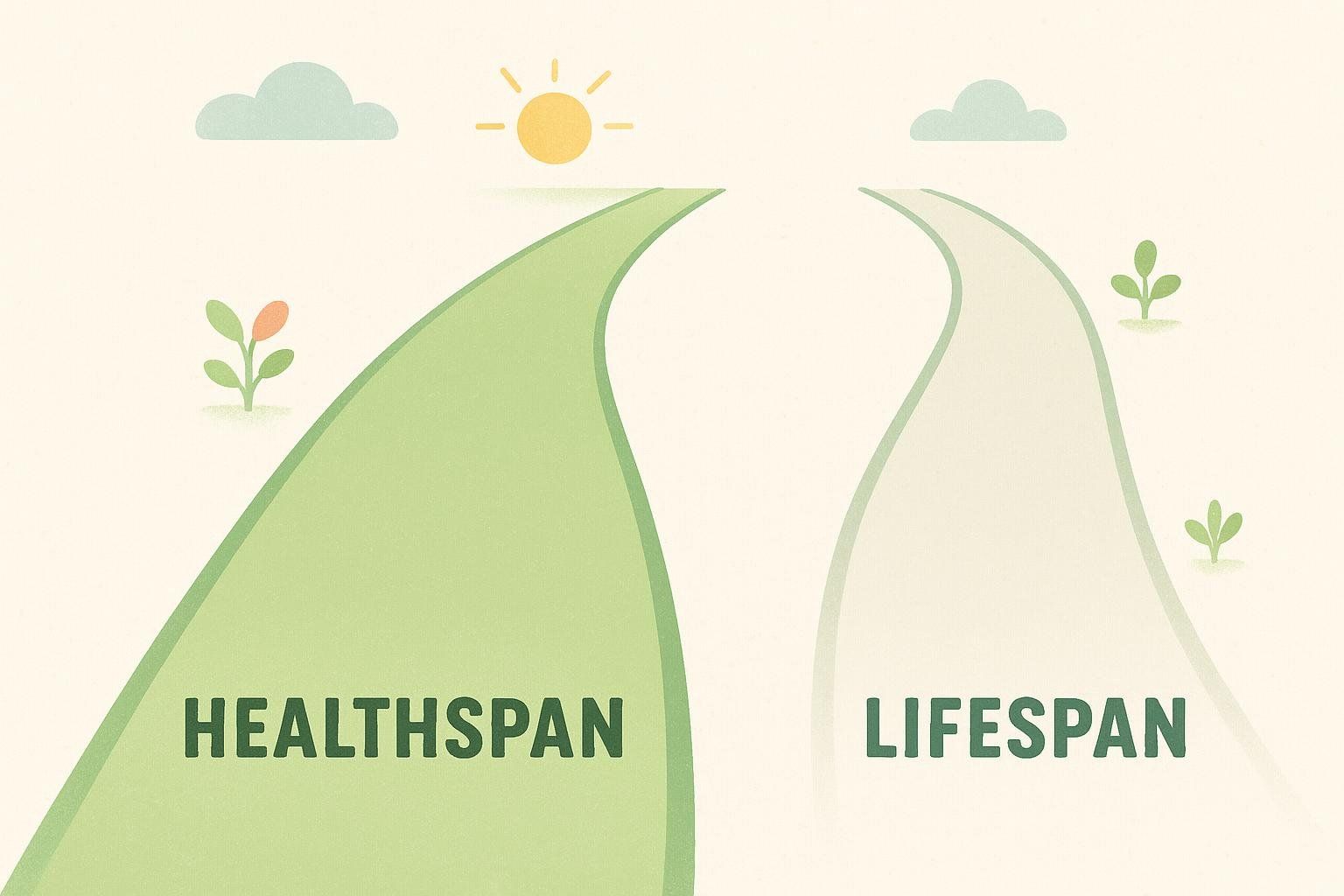
Healthspan is the period of life spent in good health—without the limitations of chronic disease or significant disability. Lifespan (or life expectancy) is the total time you remain alive. In other words:
| Term | What It Describes | Why It Matters |
|---|---|---|
| Healthspan | “Quality” years—the time you can move, think, and live independently | Predicts day-to-day vitality and healthcare costs |
| Lifespan | Total years alive, healthy and unhealthy | Doesn’t tell you how many of those years feel good |
The World Health Organization quantifies population-level healthspan using Healthy Life Expectancy (HALE), which adjusts average lifespan by subtracting time spent in poor health.
Why Healthspan Matters (More Than Ever)

- Chronic disease gap is growing. The average American now lives about 10 years with one or more disabling conditions, according to the Mayo Clinic.
- Quality beats quantity. Surveys show most adults would trade extra years for better health in later life, notes the Cambridge Dictionary.
- Economic impact. Poor healthspan drives more than 80 percent of U.S. healthcare spending, estimates the American Heart Association.
- It’s modifiable. Up to 80 percent of premature cardiac events are preventable through lifestyle changes, per the American Heart Association’s Life’s Essential 8 checklist.
Can You Measure Healthspan? Key Metrics & Biomarkers
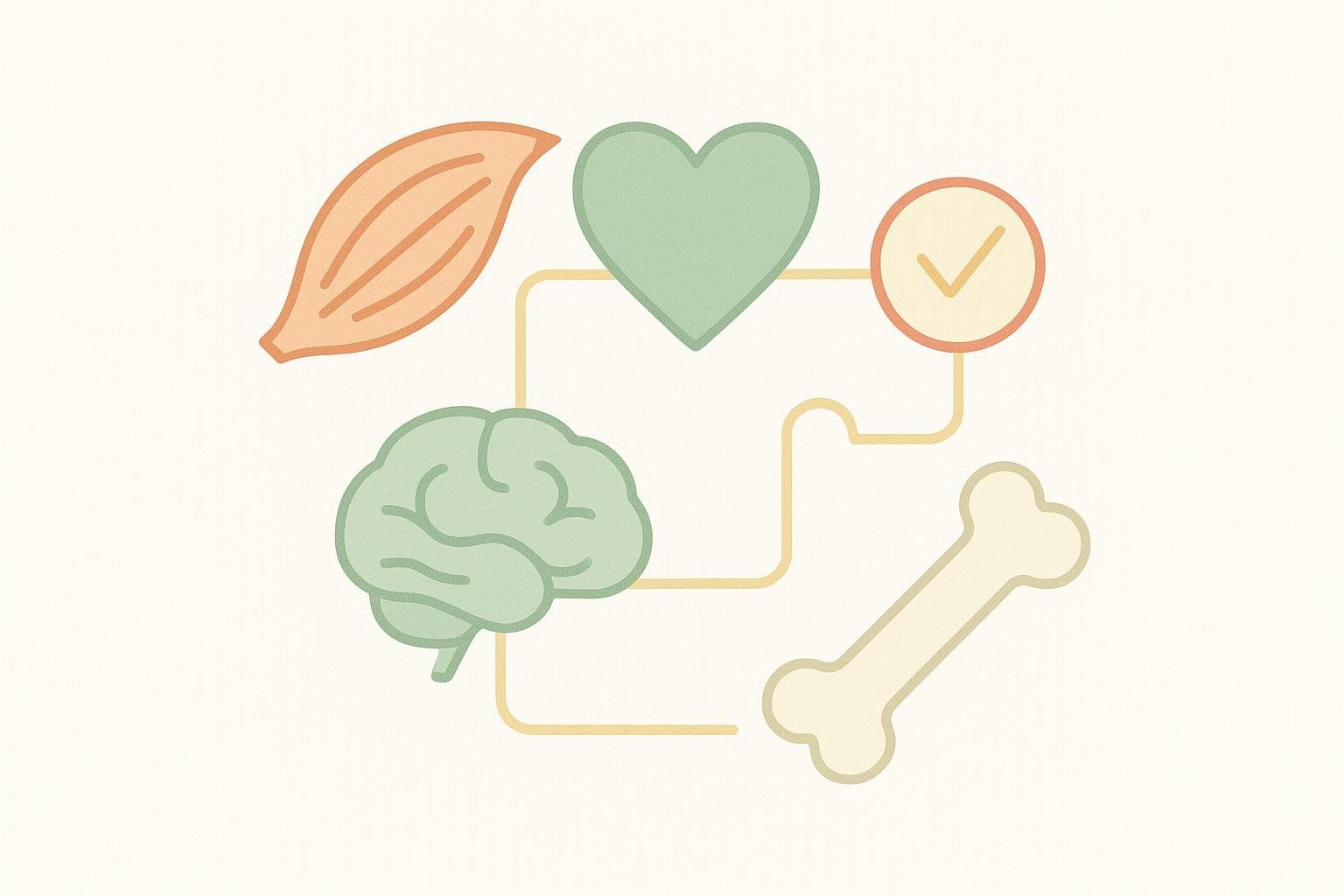
While there’s no single “healthspan blood test,” researchers track a blend of functional, clinical, and body-composition markers:
| Category | Example Metrics | Why They Matter |
|---|---|---|
| Physical Function | Grip strength, gait speed, VO₂ max | Low scores predict mortality and loss of independence |
| Body Composition | Visceral fat, Appendicular Lean Mass Index (ALMI), bone density (measured by DEXA) | Imbalances signal metabolic and musculoskeletal decline |
| Cardiometabolic Labs | Fasting glucose, HbA1c, LDL-C, triglycerides | Core drivers of heart disease and diabetes |
| Inflammation & Aging | hs-CRP, biological-age clocks (tests estimating “cellular age”), epigenetic methylation patterns (chemical tags on DNA that change with aging) | Emerging tools that track systemic aging |
5 Evidence-Based Ways to Extend Your Healthspan
1. Prioritize Lean Muscle & Functional Movement

Building and maintaining muscle fights insulin resistance, supports joints, and boosts resting metabolic rate. Strength-train 2–4 times per week and track progress with periodic DEXA scans.
What’s ALMI? Appendicular Lean Mass Index is the amount of lean muscle in your arms and legs divided by height squared (kg/m²). Clinical red-flag thresholds are < 7.0 kg/m² for men and < 5.5 kg/m² for women (NIH). Because DEXA precisely measures appendicular lean mass, a BodySpec scan can reveal whether you’re in the safe zone—then track changes over time.
2. Keep Visceral Fat in Check
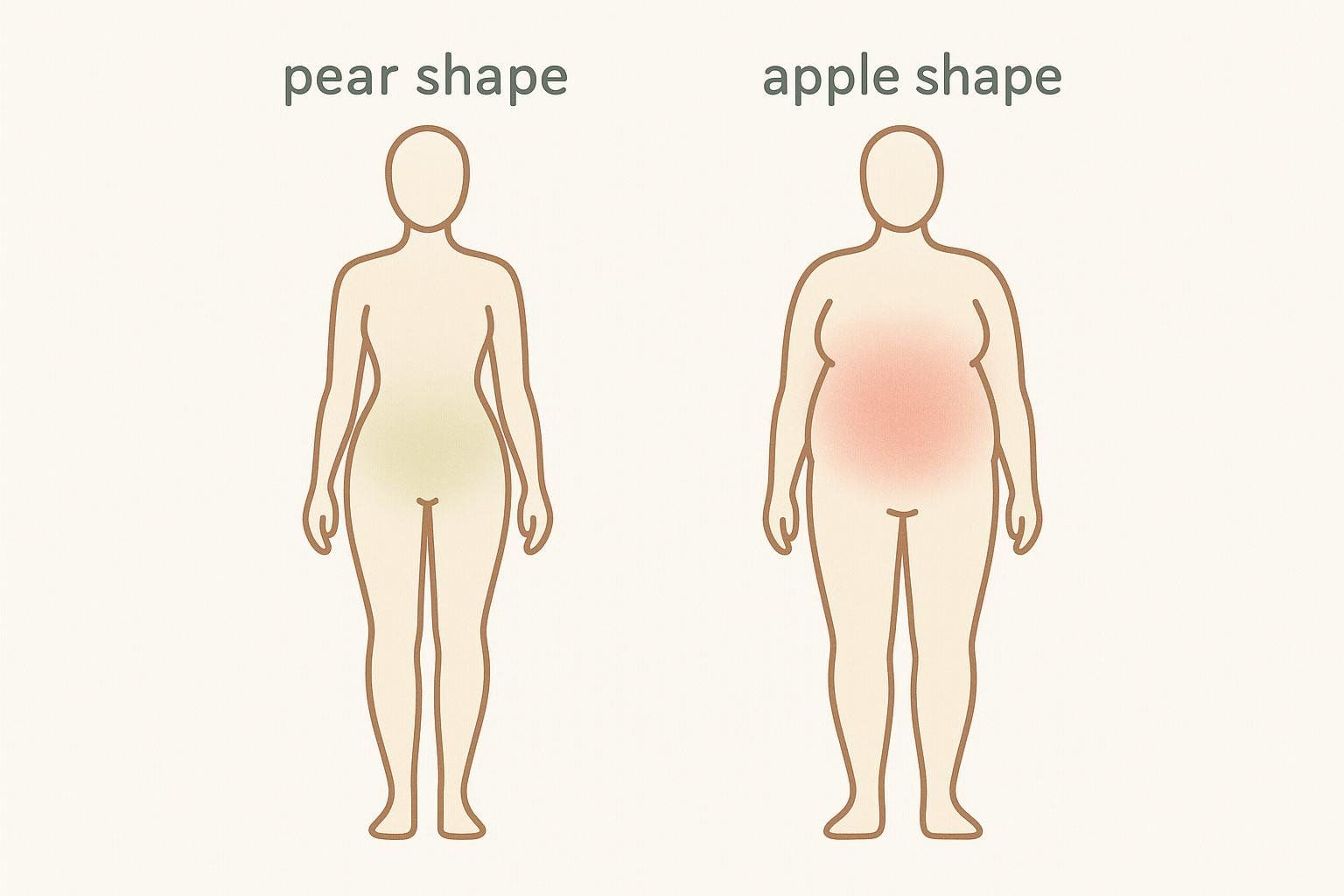
Deep belly fat is metabolically active—and not in a good way. Even a small reduction lowers inflammation and cardiometabolic risk, as detailed in our guide to understanding visceral fat.
3. Nail Cardiometabolic Basics

Follow the American Heart Association’s Life’s Essential 8: maintain healthy blood pressure, cholesterol, blood sugar, body weight, diet quality, physical activity, sleep, and avoid nicotine.
4. Stress Less, Sleep More

Chronic stress and short sleep accelerate cellular aging by increasing cortisol and inflammatory cytokines, according to the National Institutes of Health. Aim for 7–9 hours of high-quality sleep and practice daily relaxation (meditation, breathwork, or nature walks).
5. Stay Curious & Connected

Regular social engagement and mentally stimulating hobbies have been linked to slower cognitive decline and lower mortality risk. A pooled analysis of 13 longitudinal studies found that older adults with strong social connections had a 70 percent slower rate of cognitive decline than those who were socially isolated (Alzheimer’s & Dementia).
Early Action vs. Late Action: A Case Study
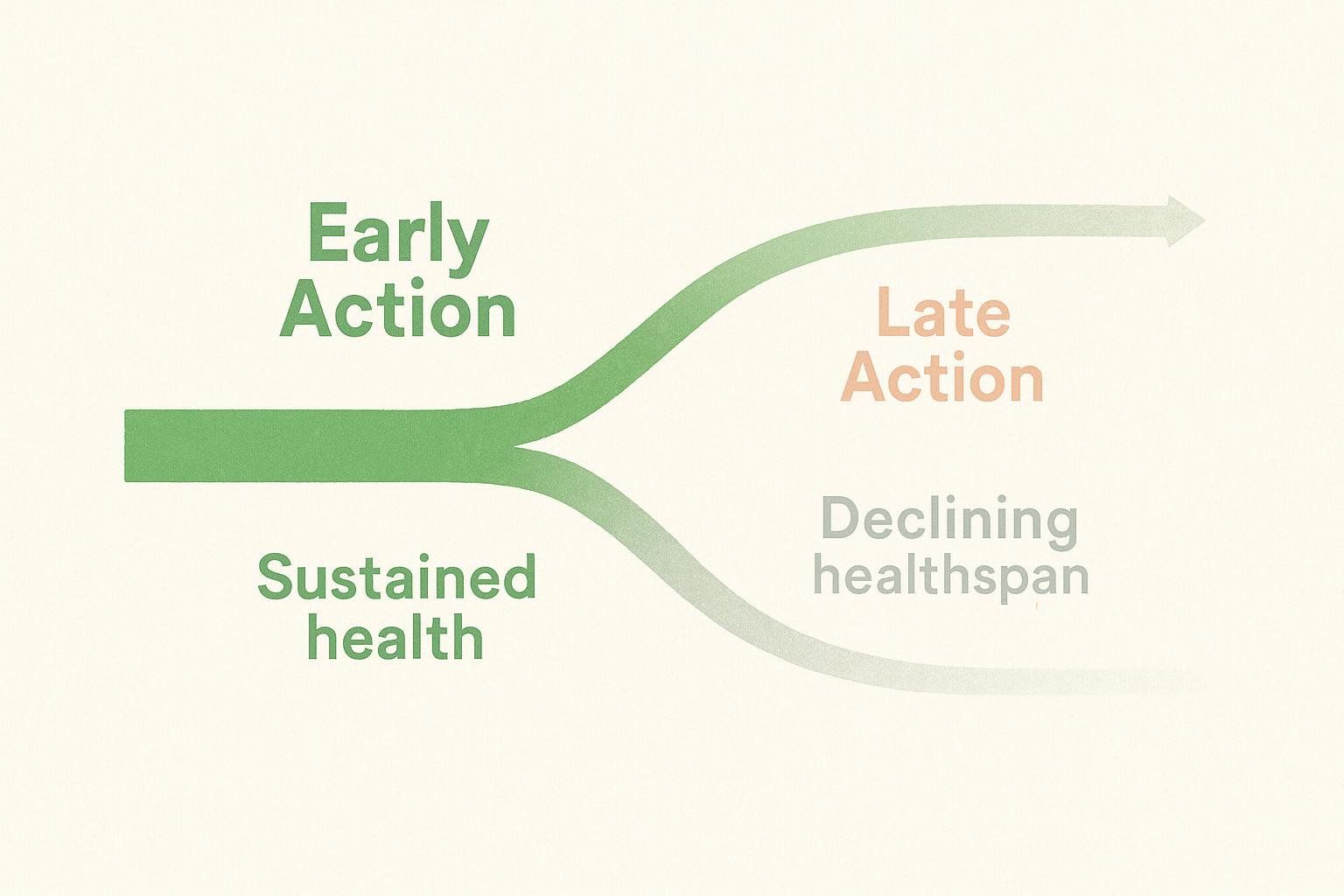
The following table is a simplified, hypothetical example illustrating how early lifestyle habits can influence healthspan metrics.
| Age | Proactive Alex | Reactive Jordan |
|---|---|---|
| 45 | ALMI 8.1 kg/m²; visceral fat 0.6 lb Weekly strength & cardio routine | ALMI 8.0 kg/m²; visceral fat 0.7 lb Sedentary office job |
| 60 | ALMI 7.6 kg/m²; visceral fat 0.9 lb No chronic diseases | ALMI 6.2 kg/m²; visceral fat 2.2 lb Borderline hypertension |
| 70 | ALMI 7.1 kg/m²; visceral fat 1.1 lb Hikes 3 mi weekly; independent living | ALMI 5.4 kg/m²; visceral fat 3.0 lb Type 2 diabetes diagnosed |
| 80 | ALMI 6.5 kg/m²; visceral fat 1.4 lb Active grandparent; no mobility aids | ALMI 4.8 kg/m²; visceral fat 3.5 lb Uses walker; two hospitalizations for falls |
| Lifespan 85 | Remains independent until 83; short terminal decline | Assisted living from 77; limited mobility last 8 years |
Takeaway: Both individuals lived to 85, but Alex enjoyed roughly eight extra “quality” years—proof that earlier action can stretch your healthspan even if your lifespan doesn’t change.
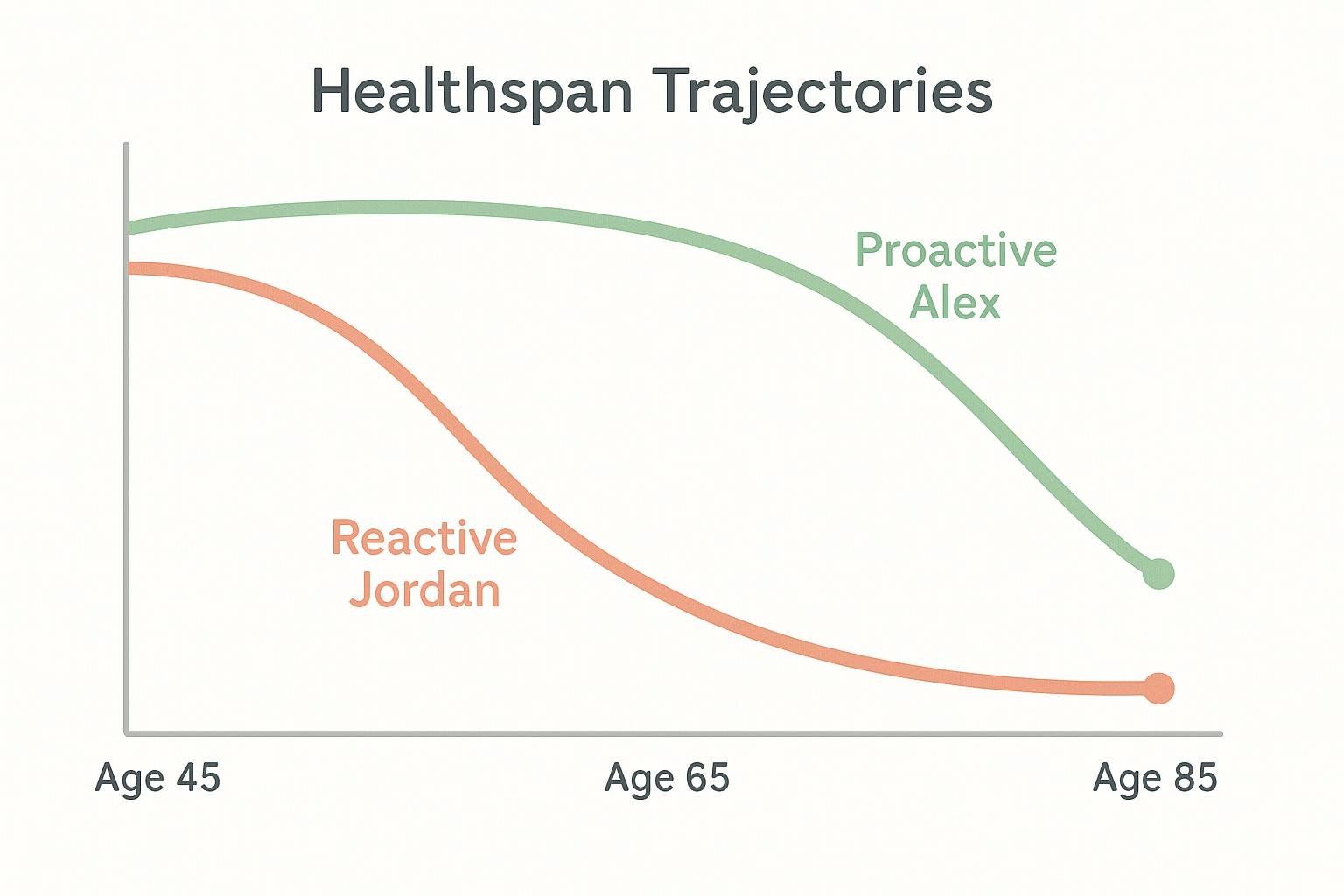
How BodySpec Scans Fit Into the Picture
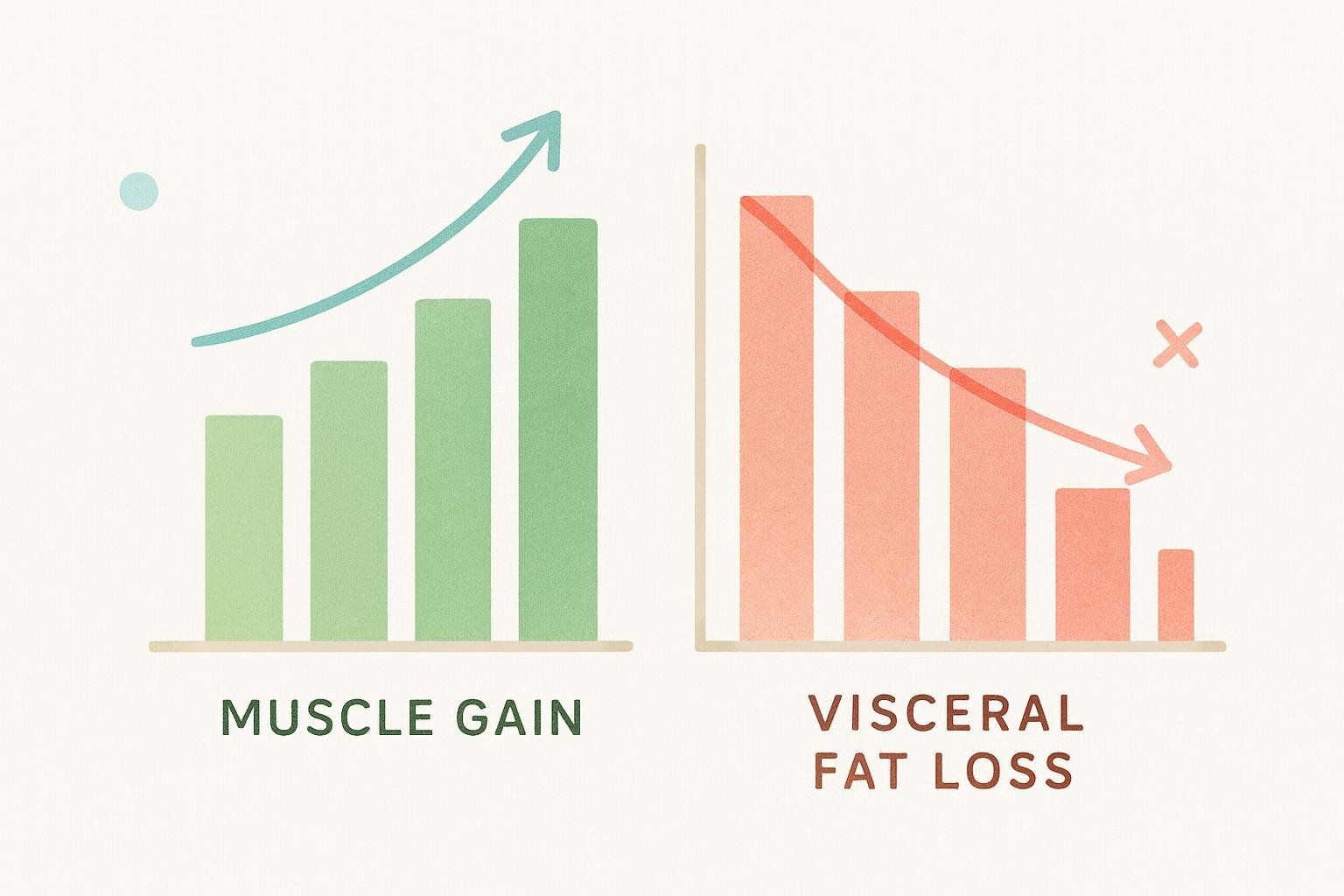
- Baseline & Trend Tracking – DEXA scans quantify fat, muscle (including ALMI), bone, and visceral fat in less than 10 minutes. Radiation dose is extremely low—about the same as eating four bananas (details in this post).
- Personalized Insights – Side-by-side scan comparisons show whether your training and nutrition plan is extending your functional healthspan.
- Motivation Through Data – Seeing real-world changes (like +2 lb lean mass, –0.5 lb visceral fat) keeps healthy habits sticky.
- Strength in Numbers – With 400,000+ scans completed, BodySpec’s anonymized database helps you understand how you stack up against people of similar age and sex. Our percentile charts spotlight your greatest opportunities for improvement—whether that’s trimming visceral fat or boosting ALMI.
- Actionable Next Steps – Our coaches translate numbers into doable tweaks for exercise, protein intake, or recovery so you can capture more quality years.
7-Day Healthspan Jump-Start Checklist
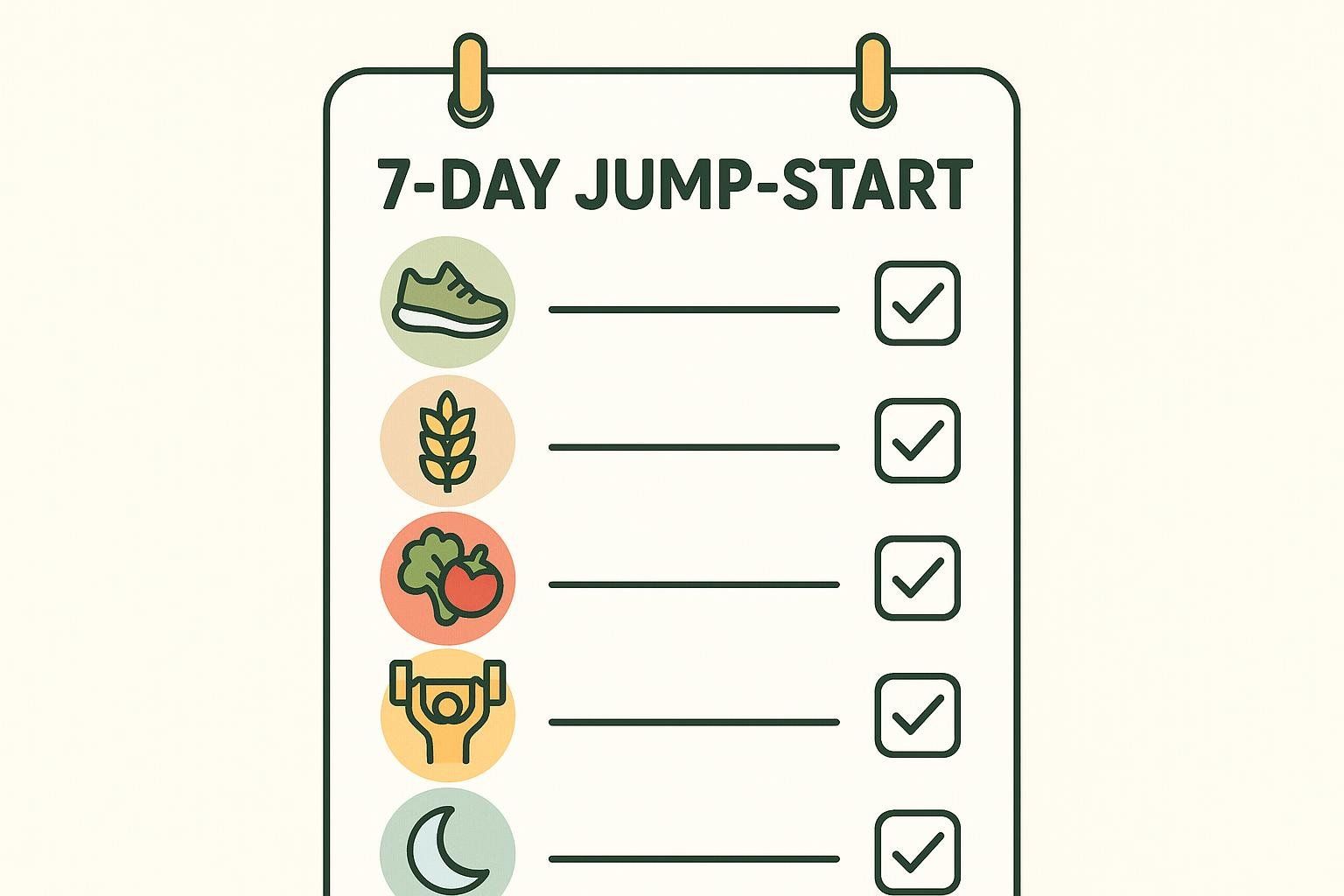
| Day | Micro-Action | Why It Works |
|---|---|---|
| 1 | Do a 30-minute brisk walk and 5-minute stretch | Kick-starts VO₂ max & mobility |
| 2 | Swap refined grains for whole grains at two meals | Improves glycemic control |
| 3 | Add a fist-sized serving of colorful veggies to lunch & dinner | Boosts antioxidants, lowers inflammation |
| 4 | Perform a 20-minute body-weight strength circuit | Stimulates muscle protein synthesis |
| 5 | Turn off screens 60 min before bed | Enhances melatonin and sleep quality |
| 6 | Schedule a BodySpec DEXA scan & set one measurable goal (e.g., –1 lb visceral fat) | Creates accountability |
| 7 | Call or meet a friend for a hobby you enjoy | Reinforces social connection |
Repeat and build from there—consistency beats perfection.
Bottom Line
Healthspan is how long you live well, not merely how long you live. By focusing on muscle quality (ALMI), visceral fat, cardiometabolic health, and lifestyle fundamentals, you can stack the deck for more vibrant years ahead. Objective data—like the metrics from a BodySpec DEXA scan—turn that vision into a measurable, trackable plan.
Ready to put numbers behind your healthspan? Book your next scan today and see where you stand.
